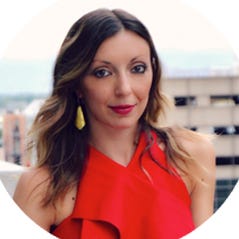Business advice for building a vibrant natural beauty brand
From connecting with retailers to conquering formulation challenges, we chatted with Weleda North America CEO Jasper van Brakel to find out what makes a natural beauty brand successful.

For Weleda North America CEO Jasper van Brakel, being in the growing natural beauty business isn't just about profits--it's about people, from the farmers and growers behind the ingredients to the independent retailers selling products. With 12 years of experience in the natural products space, van Brakel discusses this industry’s transformation and what it takes to grow as a natural brand, while staying true to core values.
What have been the greatest advancements in natural and organic personal care over the past 10 years?
JVB: Globally, this industry has graduated from being a niche industry to being a force to be reckoned with. There’s no big-box retailer in the world who has not thought about what to do with the NOPC category. That doesn’t mean you can buy NOPC products everywhere, but it is an issue from the smallest mom and pop stores to the Walmarts.
In terms of R&D, the products in our industry have really been catching up with efficacy, and the formulas have changed so much. Ten years ago, many women thought, “I would love to use something natural but I want to look good as well." That has changed a lot as well. Innovation and experimentation in NOPC has benefited consumers and retailers globally. Over the past five years, many investors are jumping on this industry. That, for me, is a sign, that mainstream finance people recognize this is an industry that can make money.
How do you grow distribution without losing site of the natural channel?
JVB: We have limited distribution in select mass outlets. Our distribution strategy is about balancing credibility with availability. Credibility as a natural brand is still built in the natural channel. If you’re not there, it’s going to be less credible for the consumer that you are really natural.
For our baby care, we said, “Where do moms shop for their natural and organic baby care? Natural stores, but also online and in pharmacy.” So we do have our baby care products in CVS stores.
What are the biggest challenges in the natural products space today?
JVB: Continued consumer education is the biggest stumbling block for our industry and for those brands who are manufacturing and selling truly organic and truly natural. Many brands put a claim on their product and consumers think it’s “green” until they find out it's full of parabens and other chemicals. Education and increased awareness is not to scare the consumer but to ensure that the consumer can make an educated decision.
Packaging is another challenge: the interaction or chemistry between the material of the packaging and the product that’s in there. Because we as an industry can only use natural ingredients that will help make the product sustain itself, that also limits the possible use of packaging materials. It’s about combining being really truthful to our heritage and principles of not using synthetic preservatives and being convenient to the consumer and having beautiful packaging.
Within sun care products, there’s a huge challenge to find the right UV filter that is truly natural along with efficacy and looking like you just jumped into a can of white paint.
What is your sourcing model?
JVB: For sourcing, raw materials and ingredients are a challenge unless you plan carefully and control the supply chain. We follow a farm-to-skin model: We own our own farm in Europe, and we grow many of our ingredients ourselves. On top of that, we have more than 50 fair trade partnerships globally with suppliers and villages and farmers who work for us.
We safeguard the supply chain and know exactly what farm or co-op a certain ingredient is coming from. We don’t necessarily own [all of it] but we control it. We aren’t doing this because it sounds good or for good marketing but because the company has been for years.
We see that a lot of retailers want to know where the ingredients come from. Less on the consumer side; they have two to three seconds to hear the story. Unless they really want to engage with the brand, and increasingly they do, they will never know the story.
How do you tell your story?
JVB: We need to isolate stories. [For example] sea buckthorn—tell where people grow it. That’s something we can talk about because it’s a great story. We can’t talk about all of the ingredients in a product. When we speak to team leaders at Whole Foods, they love this philosophy, and when we tell them about how we formulate and where we source each ingredient, and that we know all the ingredients and can show pictures of where they come from, that is pretty unique and helps to tell the story. It’s very transparent.
What do you find most inspiring about leading a legacy natural brand?
JVB: We are in the natural and organic business and that makes it a people business — the fact that I know the farmer in Italy who grows our sea buckthorn and our scientists who combine all these ingredients based on a concept for the product.
The integrity in the entire business value change is so high that no matter where you look, it’s about doing the right thing, and little by little, trying to make the world better. We are not a foundation; we aren’t here only to give back. We are here to serve our customers with reasonably priced products. That combination of being in a business that has non-monetary key objectives makes it so that once you’re in this industry, you can’t leave it. Once you really connected with what this industry does, it’s hard to go sell Vaseline.
How do you feel global markets and demand differ?
JVB: There is no unifying or common global ideal of natural beauty. Asia is profoundly different from Europe or Latin America. The challenge for a global brand like ours is to cater to the different needs of those markets but maintain consistency in branding and principles of the brand. Truly natural and organic applies to everywhere in the world, and that should be visible to consumers everywhere in the world.
What we are seeing in Asia is that natural and organic is more of a lifestyle issue than it is a deep concern or something that keeps people up at night. That lifestyle is very fashionable and therefore has a lot of traction. Then in Brazil, it’s about growing up protecting rainforests. In Switzerland, a lot of the products are organic.
Consumers have a different relationship to natural and organic products around the world based on their culture.
What do you predict for this industry over the next 10 years?
JVB: I think that the industry with further graduate to become a mature industry in terms of offering different levels of quality for different needs. I believe what we are going to see in NOPC is that there will be affordable, basic household brands and private labels that really are natural and really are organic.
One of the challenges going forward in our industry is for us and our friends in the industry to really build a brand and distinguish ourselves, not only through the ingredient quality and what the brand stands for but also other unique traits.
I also predict that we will continue to outperform the conventional beauty market. The fact of consumers being more aware, caring more, more natural “disasters” that will lead people to think about what they really put on their skin.
And there is a huge opportunity for educating the consumer after she buys her produce and cheese to go over to the whole body section.
About the Author(s)
You May Also Like




